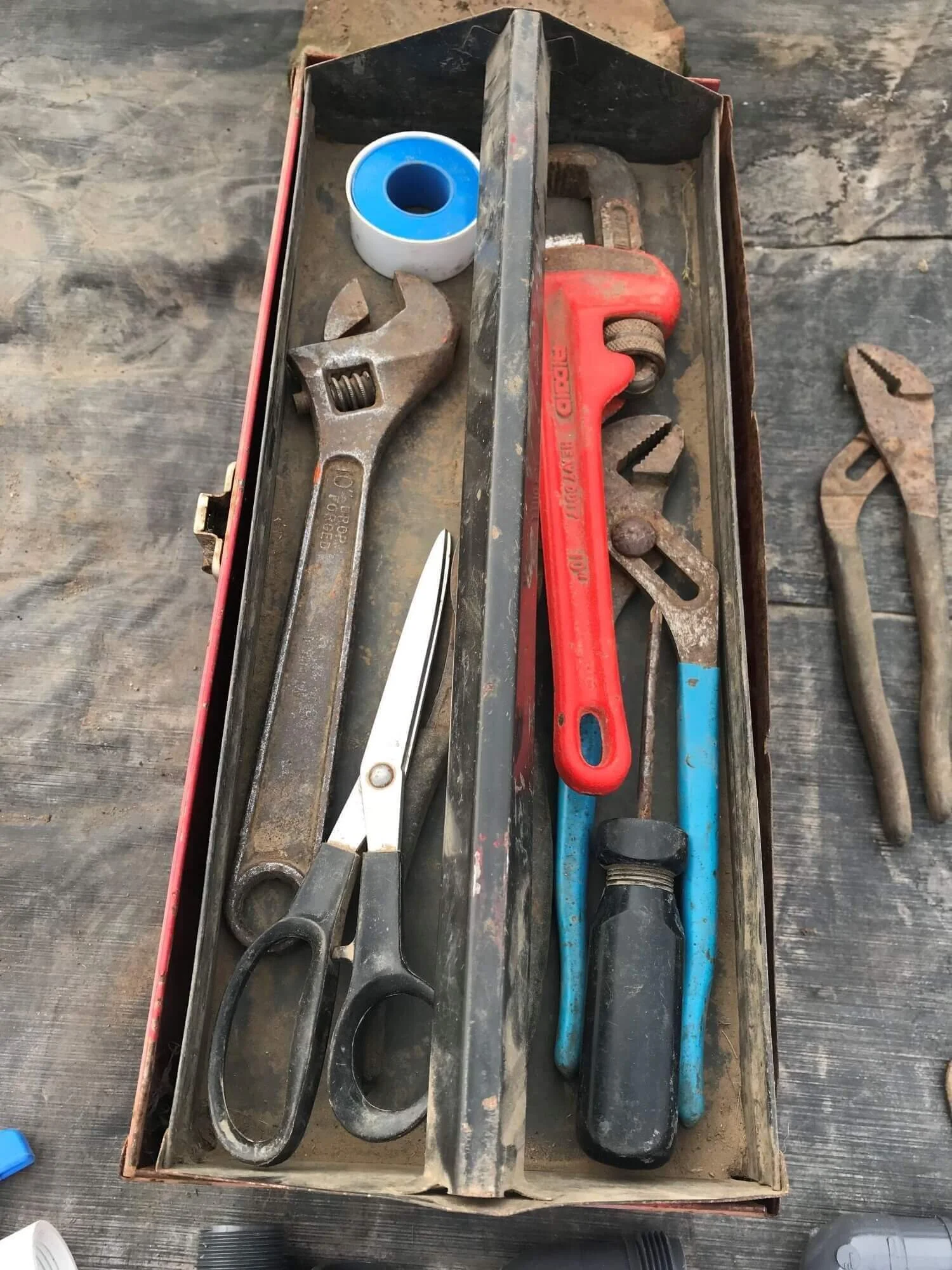From Ideas to Action: Evaluating and Implementing Your Soil Health Roadmap Recommendations
Review all your Soil Health Roadmap recommendations to determine which ones make the most sense to implement first.
By collecting and analyzing the many elements of your Soil Health Roadmap (SHR) from setting goals and assessing soil health to evaluating your system nutrient budget and carbon footprint, you’ve already discovered a lot about the health of your soil.
Using all that information, you then put together a Nutrient and Field Management Plan (NFMP) that examined your rotations, cover crops, organic materials and machinery/equipment to create four discrete lists of recommendations to improve soil health.
What’s left to do?
Now it’s time to evaluate the list of recommendations in its entirety so you can go from ideas to action.
From Ideas to Management Strategies: How to Navigate the Decision-making Process
One of the biggest challenges facing organic farmers is navigating the diversity and complexity inherent in our systems. There’s no question that diversity and interconnected, closed-loop systems foster resilience and stability for producers.
But so many of the ‘solutions’ to issues on our farms are geared towards a reductionistic model of agriculture.
Checklists of "good" practices often don't improve our land or assist with mitigating climate change.
What's missing is the importance of context.
It's not the plow or the cow that is inherently bad, it's how we use these 'tools' within the context of our particular farming system.
This system is a big, messy, and yes, complex thing to tackle.
Evaluating context is the antithesis of the one-size-fits-all mechanistic approach too often imposed on living, biological systems.
There’s no magic box of recommendations that ‘solves’ it all. Improving soil health is a process, not a destination, and the goal is to make steady progress.
We work to address the most pressing challenges at hand, in ways that do not denigrate the healthy functioning of our farm system.
The SHR synthesizes what we learn each year about our farms and leverages this work for the greatest good.
That means that every farmer will need to approach this step in a way that makes sense for their operation.
Start by compiling your entire list of Nutrient and Field Management Plan (NFMP) recommendations.
You should have generated four lists with recommendations for each section:
Crop Rotations
Cover Crops
Organic Materials
Machinery and Equipment
Below is a table of my NFMP list with recommendations that include grouping crops by planting season and sowing winter crops no later than mid-September to constructing a static aerated composting structure and re-thinking when and how I use tillage equipment.
Deciding What Recommendations to implement and when
At this stage, you’ll have developed a master list of recommendations. How do these individual recommendations fit together or conflict?
How do you know what to prioritize?
Use the following set of questions to help tease out a path forward.
(Skip this step if you instinctively know where you want to start and what recommendation(s) you want to focus on. That’s great!)
The Big List Of Decision-Making Questions
Go with your intuition and pick a question to start with such as one that you can answer or one that resonates with you. Where you start isn’t as critical as the intention you bring to the process.
Which recommendations are prerequisites for others?
What are the cost, labor, time and “fun factor” implications of each recommendation? You might want to make a table with estimates of each of these factors.
Will this particular recommendation result in a better alignment of your Self, Land and Community elements? Is this recommendation moving you closer to your ultimate holistic goal?
In terms of improving soil health, what is/are the triggering event(s), limiting factor(s), or root cause, and which of your recommendation(s) will address this most directly? Maybe nutrient cycling is limited, but the root cause is soil compaction, not a lack of nutrients. Now, trace that compaction back to its root cause. Is it an equipment issue? Or is compaction driven by your crop rotation?
Which are foundational elements? Think rotations, market channels, labor base, and the suitability of your landbase, topography, and microclimate for production that affect everything else? Which recommendations best enhance your foundation?
What other impacts are there that prevent you from implementing a certain recommendation? Can you stack benefits? Can one action create multiple positive results? This is ideal.
If you make one change, are there any unintended negative consequences that move you away from your goals? For instance, I could further reduce the amount of direct seeded crops in my field so I do not have to create as fine a seedbed using damaging tillage equipment. But this also could require that I purchase more peat moss for my potting soil mix to start my transplants. That action will increase my off farm inputs, drive up my expenses and increase my carbon footprint. Neither ‘solution’ is perfect, so I need to make decisions understanding the tradeoffs.
Are there other ways to solve your challenges? For example, if you want to reduce excess tillage (multiple passes) required to prepare fine seedbed for certain crops, could you shift your cover crop mix to use less fibrous plants such as rye instead of purchasing new equipment? Which solution is a better fit for your operation?
Other Decision Making Strategies
If none of these questions are working for you, or you’re feeling overwhelmed, here are a few more approaches:
Think visually: Consider taking a more creative approach and make a systems map. You’ll see, visually, how one recommendation connects to others and realize the relationships between elements of your system. The tools of a systems thinker can help.
Research: If you feel stalled, it’s quite possible you don’t have enough information to make a good decision. Go back to the basics and sort your recommendations into three categories: Yes, No and Maybe. Anything in the Maybe category most likely will require additional research or technical information before you can decide. Commit to uncovering what additional information you need so you can move forward.
Address a primary concern: With so many variables, this decision-making process might feel like too much. It can be hard to think in terms of so many relationships and connections. This mental modeling takes practice and time! If you find yourself overwhelmed, go back to your goals statement and your Self-Land-Community diagram. Remember what you’re ultimately trying to accomplish. Now think about everything you’ve learned about your operation and soil health. Does one issue or concern rise to the top? One thing you’d most like to change? Anything that is a constant worry? If so, scan your recommendations list and pick one item that you know will help you make progress toward solving your concern.
Go for the low hanging fruit: Pick a recommendation that you’re confident you can easily implement that will make a positive change to your work-life and the health of your land. Small successes often reap big rewards in terms of motivation.
Focus on the best of the best: A study by the University of Maryland and The Organic Center reviewed more than 150 studies worldwide to identify the organic techniques that have the most impact on soil health and climate change mitigation. These are the best of the best:
Planting cover crops
Applying combinations of organic inputs
Increasing crop rotation diversity and length
Conservation tillage
If your long list of recommendations feels overwhelming, try implementing a recommendation that focuses on one of these best practices.
Completing your Soil Health Roadmap
Ideally, when you’re finished with this step, you’ll have:
Identified which specific recommendations from your NFMP to implement.
Assigned a timeline for these recommendations. What will you tackle this year? Next year? In five years?
Created a list of actionable next steps for the recommendations you intend to pursue. What tasks do you need to complete to make your recommendations a reality?
Identified additional resources, technical assistance, or other support you need to make your implementation successful.
Be excited about moving from ideas to action!
“Synthesis is about understanding the whole and the parts at the same time, along with the relationships and the connections that make up the dynamics of the whole. Essentially, synthesis is the ability to see interconnectedness.”
~Leyla Acaroglu
One more piece of advice
It’s never going to be as neat and tidy as you think it should be.
Let that mindset go.
Arranging your recommendations list into an actionable work plan may not feel simple. That’s ok. Remember that you’re working with a highly complex, living system. Every day you walk out into your fields, you’re working in a place that is not the same as it was yesterday. It’s changing every moment of every day, and that is mostly likely a big part of the reason you love to farm!
Compiling your SHR is a huge step toward learning to think about relationships and connections. All of the work you’ve put into this process will serve you well in surprising ways.
You're implementing not a checklist of practices, but rather an entire system of soil health management.
By working through this process, you’ll be empowered by the deep and rich understanding you now have regarding the health and well-being of your land and are ready for the final piece to your SHR: developing a plan for assessment and revision.

